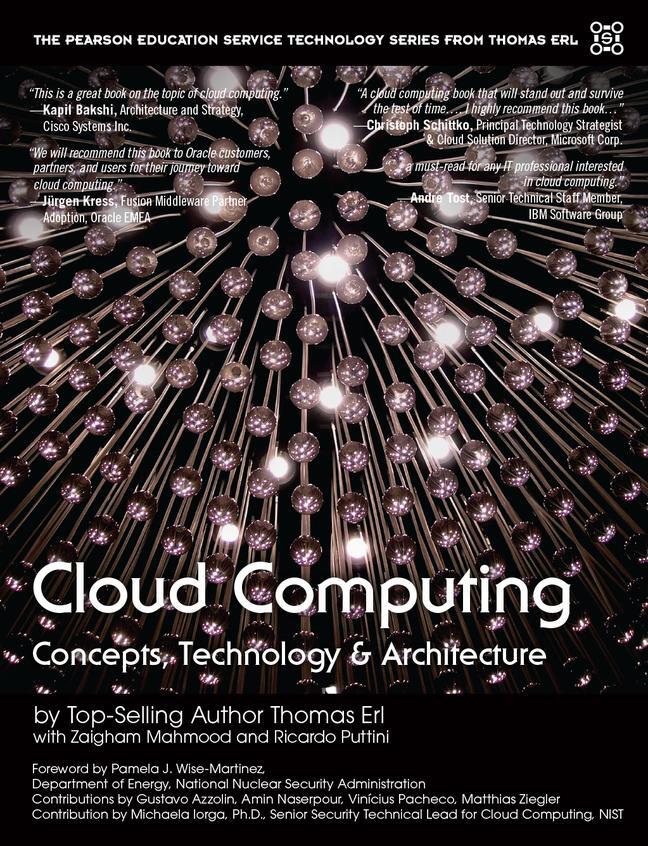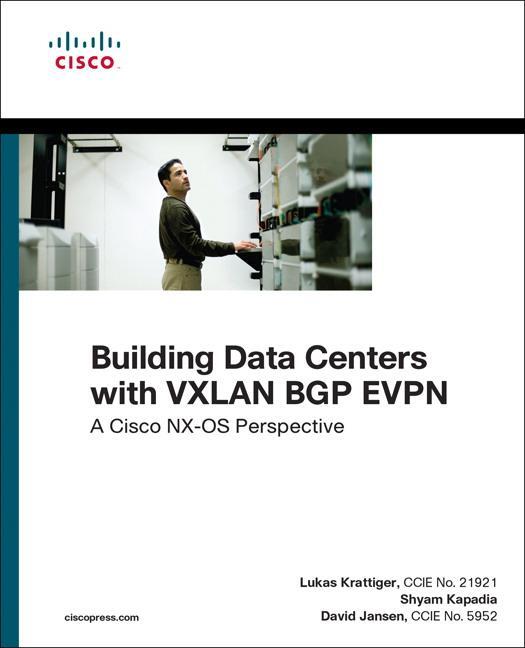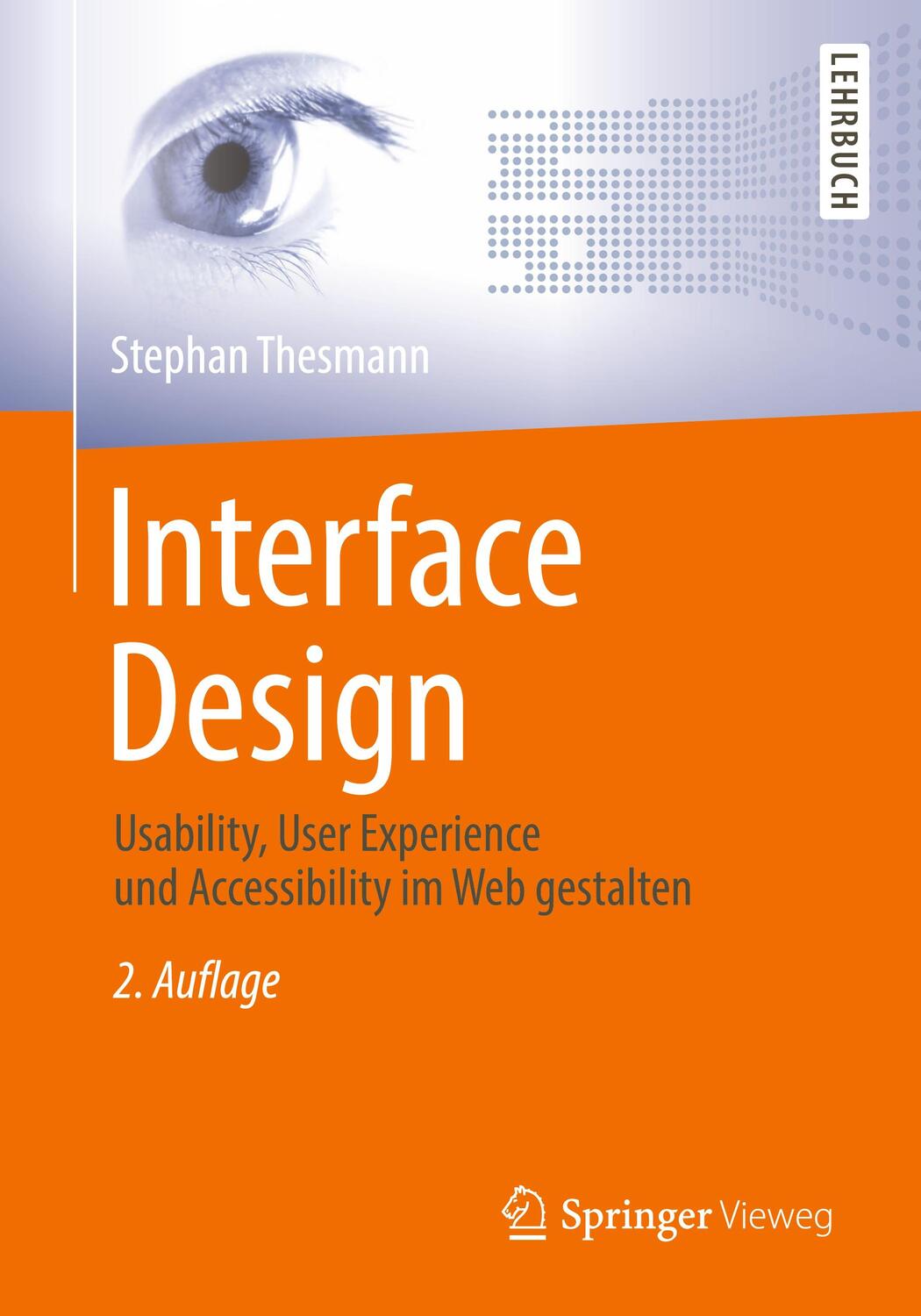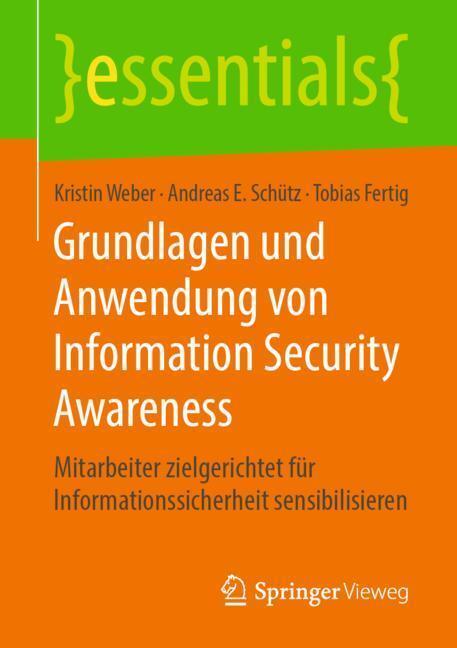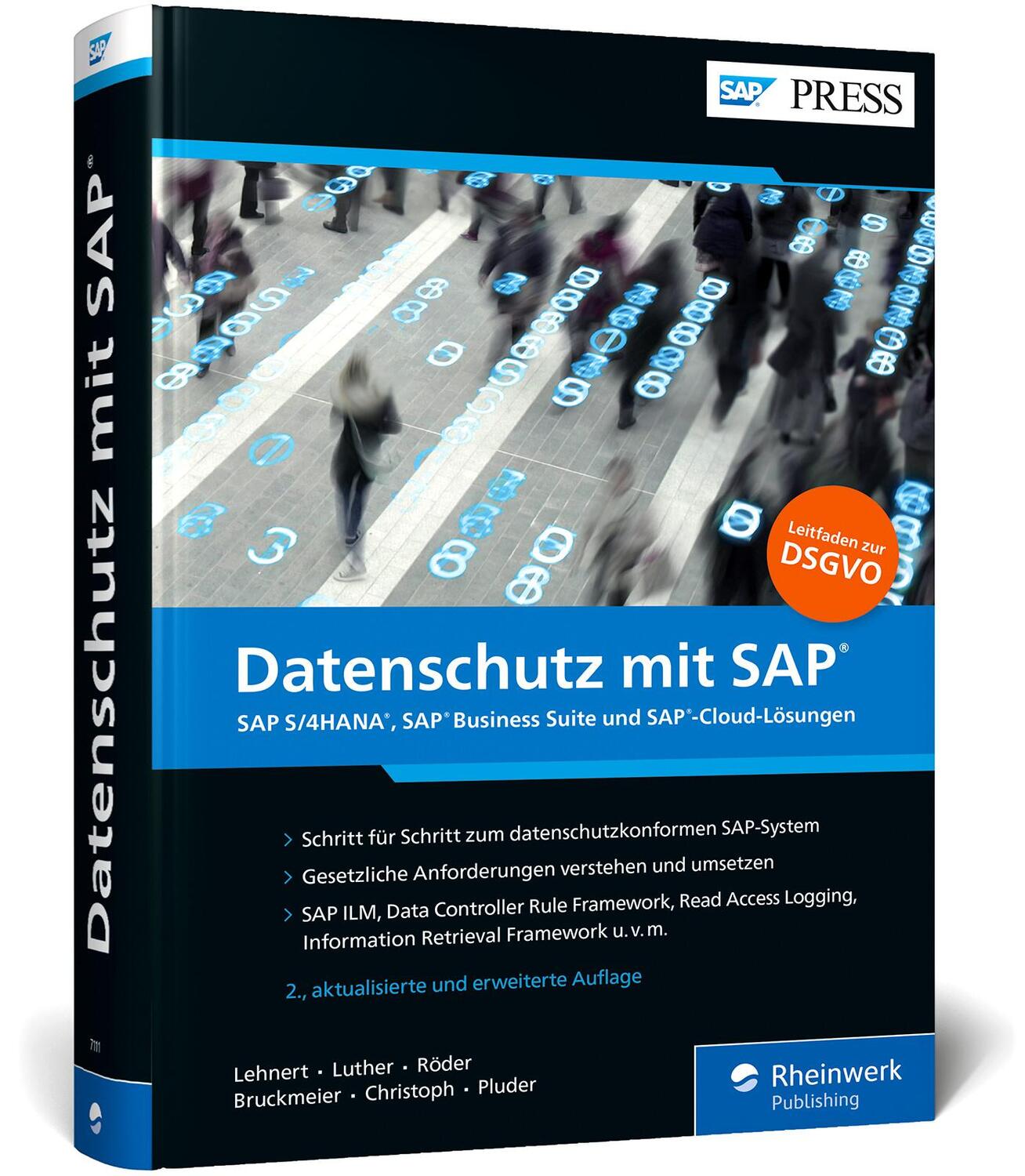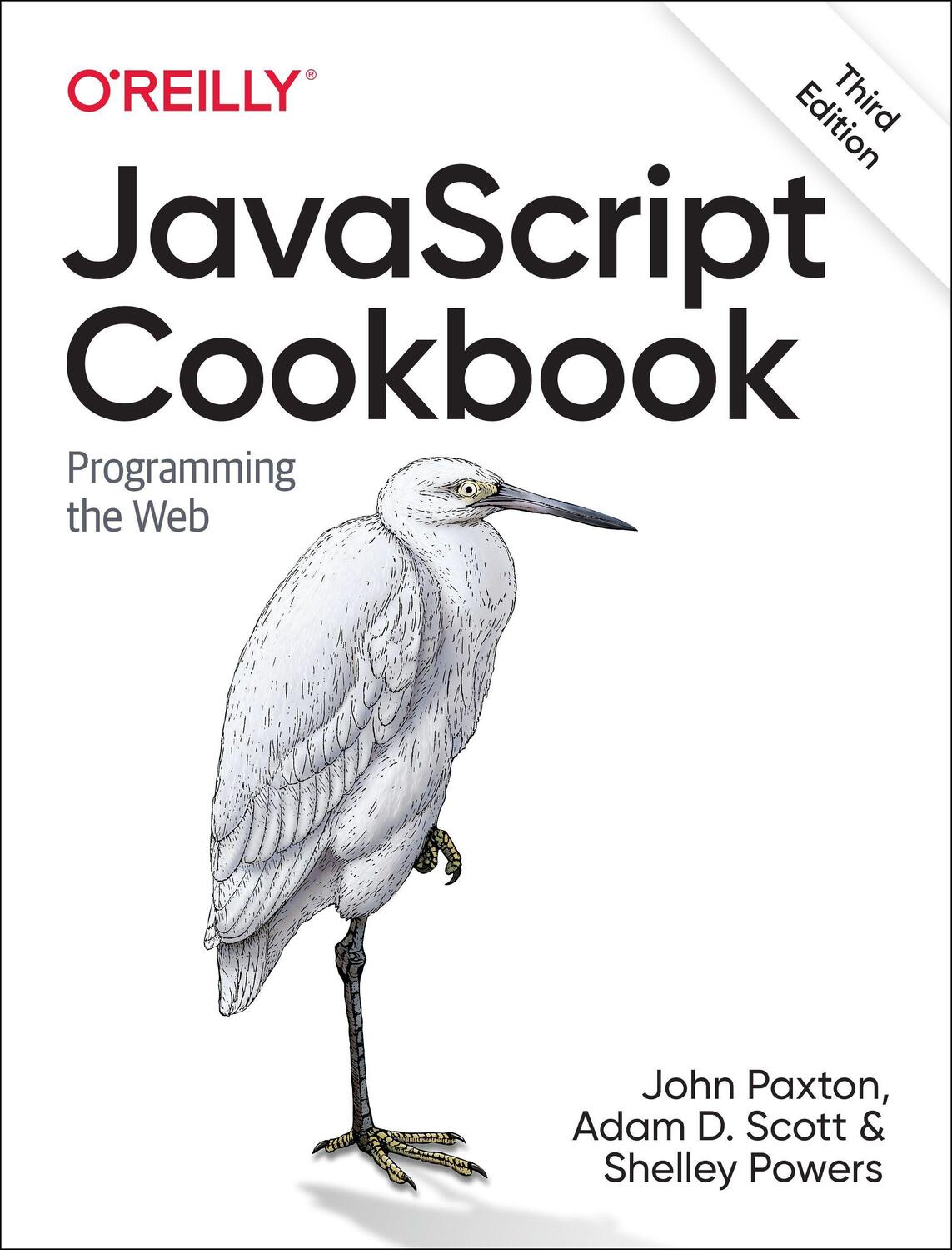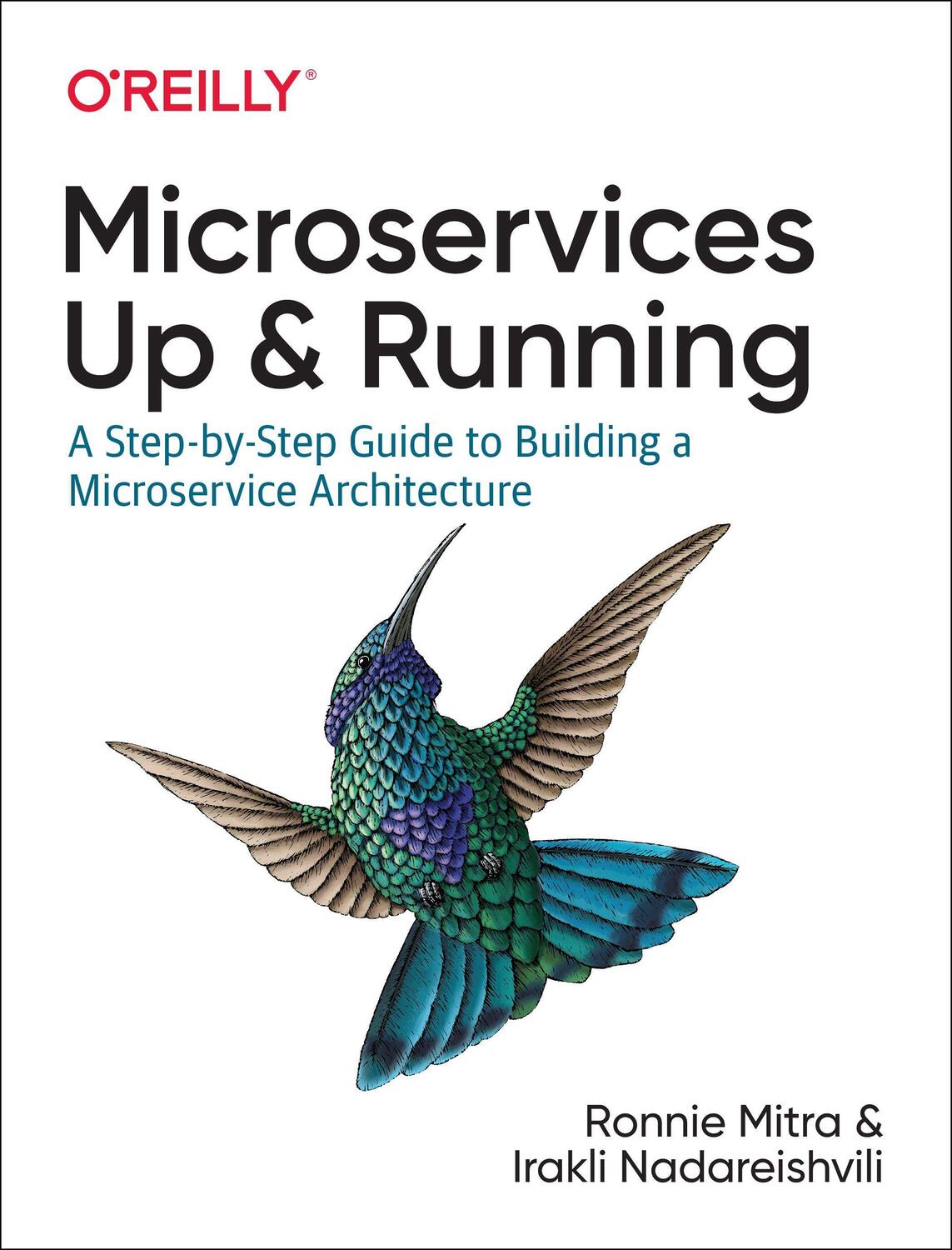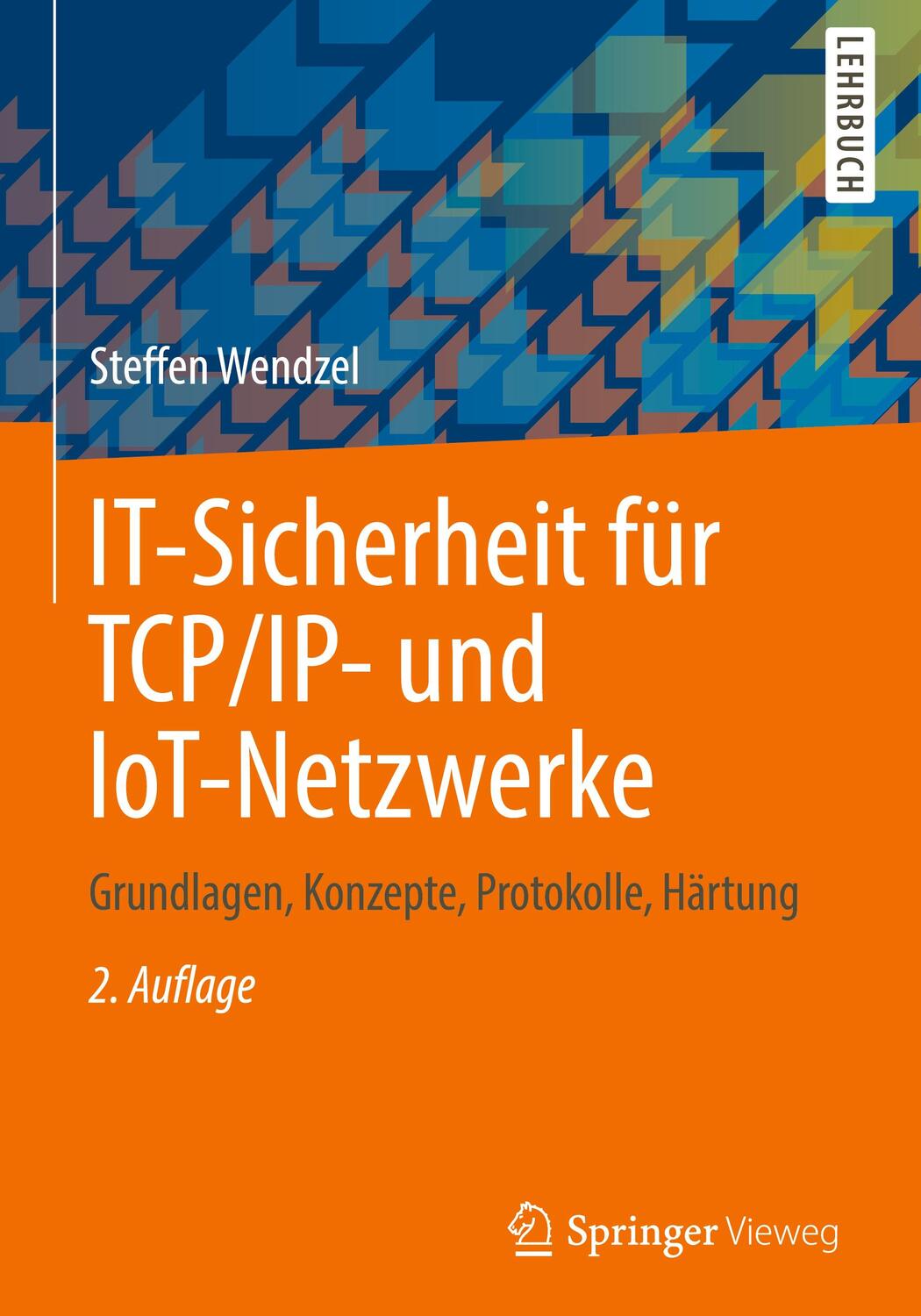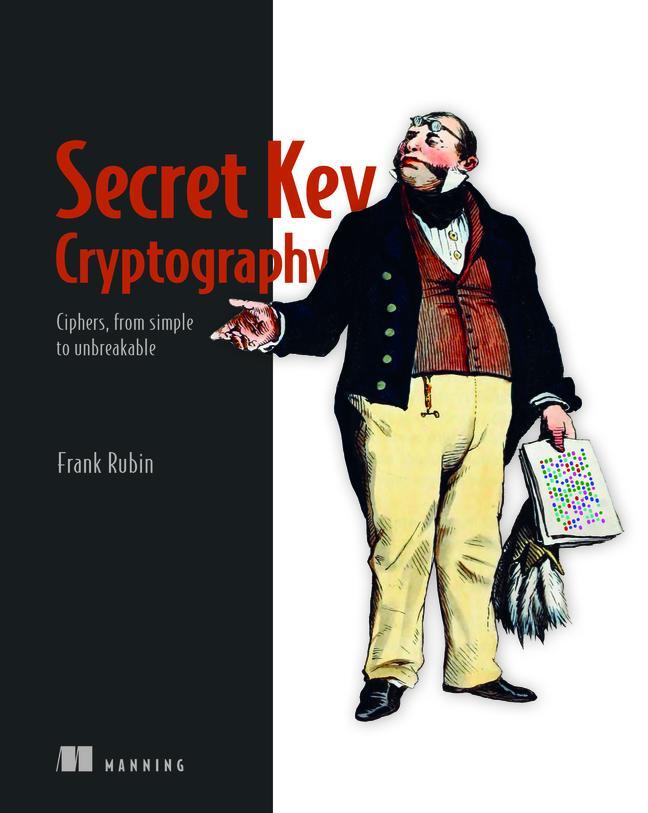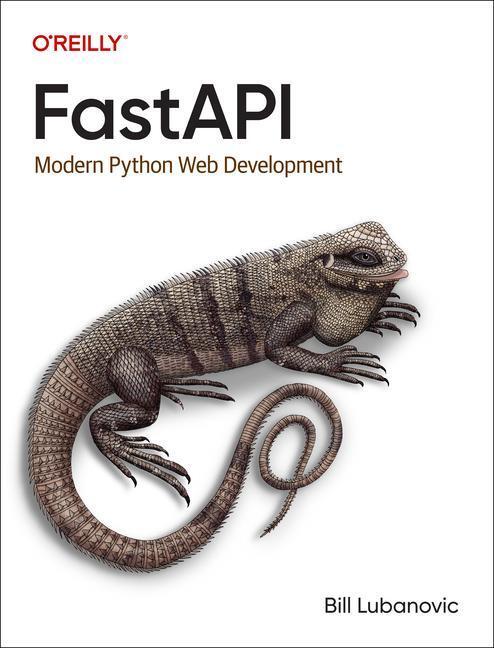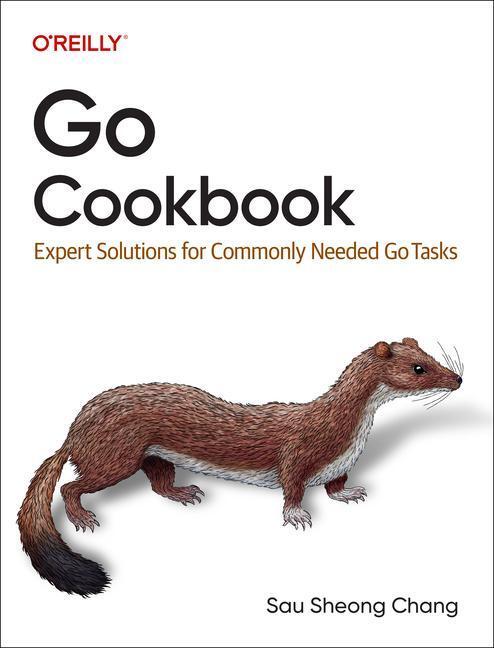45,80 €*
Versandkostenfrei per Post / DHL
auf Lager, Lieferzeit 1-2 Werktage
Thomas Erl is a top-selling IT author, founder of Arcitura Education, editor of the Service Technology Magazine and series editor of the Prentice Hall Service Technology Series from Thomas Erl. With more than 175,000 copies in print world-wide, his books have become international bestsellers and have been formally endorsed by senior members of major IT organizations, such as IBM, Microsoft, Oracle, Intel, Accenture, IEEE, HL7, MITRE, SAP, CISCO, HP, and many others. As CEO of Arcitura Education Inc. and in cooperation with [...] and [...], Thomas has led the development of curricula for the internationally recognized Cloud Certified Professional (CCP) and SOA Certified Professional (SOACP) accreditation programs, which have established a series of formal, vendor-neutral industry certifications obtained by thousands of IT professionals around the world. Thomas has toured over 20 countries as a speaker and instructor and regularly participates in international conferences, including Service Technology Symposium and Gartner events. More than 100 articles and interviews by Thomas have been published in numerous publications, including The Wall Street Journal and CIO Magazine.
Dr. Zaigham Mahmood is a published author of six books, four of which are dedicated to cloud computing. He acts as a technology consultant at Debesis Education UK and a Researcher at the University of Derby, UK. He further holds positions as a foreign professor and professor extraordinaire with international educational institutions. Professor Mahmood is a certified cloud trainer and a regular speaker at the International SOA, Cloud + Service Technology Symposium, and he has published more than 100 articles. His specialized areas of research include distributed computing, project management, and e-government.
Professor Ricardo Puttini has 15 years of field experience as a senior IT consultant at major government organizations in Brazil. He has taught several undergraduate and graduate-level courses in service orientation, service-oriented architecture, and cloud computing. Ricardo was the general chair of the 4th International SOA Symposium and 3rd International Cloud Symposium that was held in the spring of 2011. He holds a Ph.D. in Communication Networks (2004) from the University of Brasilia, where he has taught in the Electrical Engineering department since 1998. Ricardo spent 18 months at the L′Ecole Superieure d′Electricite (Supelec) in Rennes, France, during his Ph.D., where he started researching distributed system architecture and security.
<![endif]--> <![endif]--> <![endif]-->Foreword xxix
Acknowledgments xxxiii
CHAPTER 1: Introduction 1
1.1 Objectives of This Book 3
1.2 What This Book Does Not Cover 4
1.3 Who This Book Is For 4
1.4 How This Book Is Organized 4
1.5 Conventions 9
Symbols and Figures 9
Summary of Key Points 9
1.6 Additional Information 9
Updates, Errata, and Resources ([...] 9
Referenced Specifications ([...] 10
The Service Technology Magazine ([...] 10
International Service Technology Symposium ([...] 10
What Is Cloud? ([...] 10
What Is REST? ([...] 10
Cloud Computing Design Patterns ([...] 10
Service-Orientation ([...] 11
[...] Certified Cloud (CCP) Professional ([...] 11
[...] SOA Certified (SOACP) Professional ([...] 11
Notification Service 11
CHAPTER 2: Case Study Background 13
2.1 Case Study #1: ATN 14
Technical Infrastructure and Environment 14
Business Goals and New Strategy 15
Roadmap and Implementation Strategy 15
2.2 Case Study #2: DTGOV 16
Technical Infrastructure and Environment 17
Business Goals and New Strategy 18
Roadmap and Implementation Strategy 19
2.3 Case Study #3: Innovartus Technologies Inc 20
Technical Infrastructure and Environment 20
Business Goals and Strategy 20
Roadmap and Implementation Strategy 21
PART I: FUNDAMENTAL CLOUD COMPUTING
CHAPTER 3: Understanding Cloud Computing 25
3.1 Origins and Influences 26
A Brief History 26
Definitions 27
Business Drivers 28
Capacity Planning 28
Cost Reduction 29
Organizational Agility 30
Technology Innovations 30
Clustering 31
Grid Computing 31
Virtualization 32
Technology Innovations vs. Enabling Technologies 32
3.2 Basic Concepts and Terminology 33
Cloud 33
IT Resource 34
On-Premise 36
Cloud Consumers and Cloud Providers 36
Scaling 37
Horizontal Scaling 37
Vertical Scaling 37
Cloud Service 38
Cloud Service Consumer 40
3.3 Goals and Benefits 40
Reduced Investments and Proportional Costs 41
Increased Scalability 42
Increased Availability and Reliability 43
3.4 Risks and Challenges 45
Increased Security Vulnerabilities 45
Reduced Operational Governance Control 45
Limited Portability Between Cloud Providers 47
Multi-Regional Compliance and Legal Issues 48
CHAPTER 4: Fundamental Concepts and Models 51
4.1 Roles and Boundaries 52
Cloud Provider 52
Cloud Consumer 52
Cloud Service Owner 53
Cloud Resource Administrator 54
Additional Roles 56
Organizational Boundary 56
Trust Boundary 57
4.2 Cloud Characteristics 58
On-Demand Usage 59
Ubiquitous Access 59
Multitenancy (and Resource Pooling) 59
Elasticity 61
Measured Usage 61
Resiliency 61
4.3 Cloud Delivery Models 63
Infrastructure-as-a-Service (IaaS) 64
Platform-as-a-Service (PaaS) 65
Software-as-a-Service (SaaS) 66
Comparing Cloud Delivery Models 67
Combining Cloud Delivery Models 69
IaaS + PaaS 69
IaaS + PaaS + SaaS 72
4.4 Cloud Deployment Models 73
Public Clouds 73
Community Clouds 74
Private Clouds 75
Hybrid Clouds 77
Other Cloud Deployment Models 78
CHAPTER 5: Cloud-Enabling Technology 79
5.1 Broadband Networks and Internet Architecture 80
Internet Service Providers (ISPs) 80
Connectionless Packet Switching (Datagram Networks) 83
Router-Based Interconnectivity 83
Physical Network 84
Transport Layer Protocol 84
Application Layer Protocol 85
Technical and Business Considerations 85
Connectivity Issues 85
Network Bandwidth and Latency Issues 88
Cloud Carrier and Cloud Provider Selection 89
5.2 Data Center Technology 90
Virtualization 90
Standardization and Modularity 90
Automation 91
Remote Operation and Management 92
High Availability 92
Security-Aware Design, Operation, and Management 92
Facilities 92
Computing Hardware 93
Storage Hardware 93
Network Hardware 95
Carrier and External Networks Interconnection 95
Web-Tier Load Balancing and Acceleration 95
LAN Fabric 95
SAN Fabric 95
NAS Gateways 95
Other Considerations 96
5.3 Virtualization Technology 97
Hardware Independence 98
Server Consolidation 98
Resource Replication 98
Operating System-Based Virtualization 99
Hardware-Based Virtualization 101
Virtualization Management 102
Other Considerations 102
5.4 Web Technology 103
Basic Web Technology 104
Web Applications 104
5.5 Multitenant Technology 106
5.6 Service Technology 108
Web Services 109
REST Services 110
Service Agents 111
Service Middleware 112
5.7 Case Study Example 113
CHAPTER 6: Fundamental Cloud Security 117
6.1 Basic Terms and Concepts 118
Confidentiality 118
Integrity 119
Authenticity 119
Availability 119
Threat 120
Vulnerability 120
Risk 120
Security Controls 120
Security Mechanisms 121
Security Policies 121
6.2 Threat Agents 121
Anonymous Attacker 122
Malicious Service Agent 123
Trusted Attacker 123
Malicious Insider 123
6.3 Cloud Security Threats 124
Traffic Eavesdropping 124
Malicious Intermediary 124
Denial of Service 126
Insufficient Authorization 127
Virtualization Attack 127
Overlapping Trust Boundaries 129
6.4 Additional Considerations 131
Flawed Implementations 131
Security Policy Disparity 132
Contracts 132
Risk Management 133
6.5 Case Study Example 135
PART II: CLOUD COMPUTING MECHANISMS
CHAPTER 7: Cloud Infrastructure Mechanisms 139
7.1 Logical Network Perimeter 140
Case Study Example 142
7.2 Virtual Server 144
Case Study Example 145
7.3 Cloud Storage Device 149
Cloud Storage Levels 149
Network Storage Interfaces 150
Object Storage Interfaces 151
Database Storage Interfaces 151
Relational Data Storage 151
Non-Relational Data Storage 152
Case Study Example 152
7.4 Cloud Usage Monitor 155
Monitoring Agent 155
Resource Agent 155
Polling Agent 157
Case Study Example 157
7.5 Resource Replication 161
Case Study Example 162
7.6 Ready-Made Environment 166
Case Study Example 167
CHAPTER 8: Specialized Cloud Mechanisms 169
8.1 Automated Scaling Listener 170
Case Study Example 172
8.2 Load Balancer 176
Case Study Example 177
8.3 SLA Monitor 178
Case Study Example 180
SLA Monitor Polling Agent 180
SLA Monitoring Agent 180
8.4 Pay-Per-Use Monitor 184
Case Study Example 187
8.5 Audit Monitor 189
Case Study Example 189
8.6 Failover System 191
Active-Active 191
Active-Passive 194
Case Study Example 196
8.7 Hypervisor 200
Case Study Example 201
8.8 Resource Cluster 203
Case Study Example 206
8.9 Multi-Device Broker 208
Case Study Example 209
8.10 State Management Database 210
Case Study Example 211
CHAPTER 9: Cloud Management Mechanisms 213
9.1 Remote Administration System 214
Case Study Example 219
9.2 Resource Management System 219
Case Study Example 221
9.3 SLA Management System 222
Case Study Example 224
9.4 Billing Management System 225
Case Study Example 227
CHAPTER 10: Cloud Security Mechanisms 229
10.1 Encryption 230
Symmetric Encryption 231
Asymmetric Encryption 231
Case Study Example 233
10.2 Hashing 234
Case Study Example 235
10.3 Digital Signature 236
Case Study Example 238
10.4 Public Key Infrastructure (PKI) 240
Case Study Example 242
10.5 Identity and Access Management (IAM) 243
Case Study Example 244
10.6 Single Sign-On (SSO) 244
Case Study Example 246
10.7 Cloud-Based Security Groups 247
Case Study Example 249
10.8 Hardened Virtual Server Images 251
Case Study Example 252
PART III: CLOUD COMPUTING ARCHITECTURE
CHAPTER 11: Fundamental Cloud Architectures 255
11.1 Workload Distribution Architecture 256
11.2 Resource Pooling Architecture 257
11.3 Dynamic Scalability Architecture 262
11.4 Elastic Resource Capacity Architecture 265
11.5 Service Load Balancing Architecture 268
11.6 Cloud Bursting Architecture 271
11.7 Elastic Disk Provisioning Architecture 272
11.8 Redundant Storage Architecture 275
11.9 Case Study Example 277
CHAPTER 12: Advanced Cloud Architectures 281
12.1 Hypervisor Clustering Architecture 282
12.2 Load Balanced Virtual Server Instances Architecture 288
12.3 Non-Disruptive Service Relocation Architecture 293
12.4 Zero Downtime Architecture 298
12.5 Cloud Balancing Architecture 299
12.6 Resource Reservation Architecture 301
12.7 Dynamic Failure Detection and Recovery Architecture 306
12.8 Bare-Metal Provisioning Architecture 309
12.9 Rapid Provisioning Architecture 312
12.10 Storage Workload Management Architecture 315
12.11 Case Study Example 321
CHAPTER 13: Specialized Cloud Architectures 323
13.1 Direct I/O Access...
| Erscheinungsjahr: | 2013 |
|---|---|
| Fachbereich: | Datenkommunikation, Netze & Mailboxen |
| Genre: | Informatik |
| Rubrik: | Naturwissenschaften & Technik |
| Medium: | Buch |
| Seiten: | 528 |
| ISBN-13: | 9780133387520 |
| ISBN-10: | 0133387526 |
| Sprache: | Englisch |
| Einband: | Gebunden |
| Autor: |
Erl, Thomas
Puttini, Ricardo Mahmood, Zaigham |
| Hersteller: | Prentice Hall |
| Maße: | 238 x 189 x 40 mm |
| Von/Mit: | Thomas Erl (u. a.) |
| Erscheinungsdatum: | 10.05.2013 |
| Gewicht: | 1,04 kg |
Thomas Erl is a top-selling IT author, founder of Arcitura Education, editor of the Service Technology Magazine and series editor of the Prentice Hall Service Technology Series from Thomas Erl. With more than 175,000 copies in print world-wide, his books have become international bestsellers and have been formally endorsed by senior members of major IT organizations, such as IBM, Microsoft, Oracle, Intel, Accenture, IEEE, HL7, MITRE, SAP, CISCO, HP, and many others. As CEO of Arcitura Education Inc. and in cooperation with [...] and [...], Thomas has led the development of curricula for the internationally recognized Cloud Certified Professional (CCP) and SOA Certified Professional (SOACP) accreditation programs, which have established a series of formal, vendor-neutral industry certifications obtained by thousands of IT professionals around the world. Thomas has toured over 20 countries as a speaker and instructor and regularly participates in international conferences, including Service Technology Symposium and Gartner events. More than 100 articles and interviews by Thomas have been published in numerous publications, including The Wall Street Journal and CIO Magazine.
Dr. Zaigham Mahmood is a published author of six books, four of which are dedicated to cloud computing. He acts as a technology consultant at Debesis Education UK and a Researcher at the University of Derby, UK. He further holds positions as a foreign professor and professor extraordinaire with international educational institutions. Professor Mahmood is a certified cloud trainer and a regular speaker at the International SOA, Cloud + Service Technology Symposium, and he has published more than 100 articles. His specialized areas of research include distributed computing, project management, and e-government.
Professor Ricardo Puttini has 15 years of field experience as a senior IT consultant at major government organizations in Brazil. He has taught several undergraduate and graduate-level courses in service orientation, service-oriented architecture, and cloud computing. Ricardo was the general chair of the 4th International SOA Symposium and 3rd International Cloud Symposium that was held in the spring of 2011. He holds a Ph.D. in Communication Networks (2004) from the University of Brasilia, where he has taught in the Electrical Engineering department since 1998. Ricardo spent 18 months at the L′Ecole Superieure d′Electricite (Supelec) in Rennes, France, during his Ph.D., where he started researching distributed system architecture and security.
<![endif]--> <![endif]--> <![endif]-->Foreword xxix
Acknowledgments xxxiii
CHAPTER 1: Introduction 1
1.1 Objectives of This Book 3
1.2 What This Book Does Not Cover 4
1.3 Who This Book Is For 4
1.4 How This Book Is Organized 4
1.5 Conventions 9
Symbols and Figures 9
Summary of Key Points 9
1.6 Additional Information 9
Updates, Errata, and Resources ([...] 9
Referenced Specifications ([...] 10
The Service Technology Magazine ([...] 10
International Service Technology Symposium ([...] 10
What Is Cloud? ([...] 10
What Is REST? ([...] 10
Cloud Computing Design Patterns ([...] 10
Service-Orientation ([...] 11
[...] Certified Cloud (CCP) Professional ([...] 11
[...] SOA Certified (SOACP) Professional ([...] 11
Notification Service 11
CHAPTER 2: Case Study Background 13
2.1 Case Study #1: ATN 14
Technical Infrastructure and Environment 14
Business Goals and New Strategy 15
Roadmap and Implementation Strategy 15
2.2 Case Study #2: DTGOV 16
Technical Infrastructure and Environment 17
Business Goals and New Strategy 18
Roadmap and Implementation Strategy 19
2.3 Case Study #3: Innovartus Technologies Inc 20
Technical Infrastructure and Environment 20
Business Goals and Strategy 20
Roadmap and Implementation Strategy 21
PART I: FUNDAMENTAL CLOUD COMPUTING
CHAPTER 3: Understanding Cloud Computing 25
3.1 Origins and Influences 26
A Brief History 26
Definitions 27
Business Drivers 28
Capacity Planning 28
Cost Reduction 29
Organizational Agility 30
Technology Innovations 30
Clustering 31
Grid Computing 31
Virtualization 32
Technology Innovations vs. Enabling Technologies 32
3.2 Basic Concepts and Terminology 33
Cloud 33
IT Resource 34
On-Premise 36
Cloud Consumers and Cloud Providers 36
Scaling 37
Horizontal Scaling 37
Vertical Scaling 37
Cloud Service 38
Cloud Service Consumer 40
3.3 Goals and Benefits 40
Reduced Investments and Proportional Costs 41
Increased Scalability 42
Increased Availability and Reliability 43
3.4 Risks and Challenges 45
Increased Security Vulnerabilities 45
Reduced Operational Governance Control 45
Limited Portability Between Cloud Providers 47
Multi-Regional Compliance and Legal Issues 48
CHAPTER 4: Fundamental Concepts and Models 51
4.1 Roles and Boundaries 52
Cloud Provider 52
Cloud Consumer 52
Cloud Service Owner 53
Cloud Resource Administrator 54
Additional Roles 56
Organizational Boundary 56
Trust Boundary 57
4.2 Cloud Characteristics 58
On-Demand Usage 59
Ubiquitous Access 59
Multitenancy (and Resource Pooling) 59
Elasticity 61
Measured Usage 61
Resiliency 61
4.3 Cloud Delivery Models 63
Infrastructure-as-a-Service (IaaS) 64
Platform-as-a-Service (PaaS) 65
Software-as-a-Service (SaaS) 66
Comparing Cloud Delivery Models 67
Combining Cloud Delivery Models 69
IaaS + PaaS 69
IaaS + PaaS + SaaS 72
4.4 Cloud Deployment Models 73
Public Clouds 73
Community Clouds 74
Private Clouds 75
Hybrid Clouds 77
Other Cloud Deployment Models 78
CHAPTER 5: Cloud-Enabling Technology 79
5.1 Broadband Networks and Internet Architecture 80
Internet Service Providers (ISPs) 80
Connectionless Packet Switching (Datagram Networks) 83
Router-Based Interconnectivity 83
Physical Network 84
Transport Layer Protocol 84
Application Layer Protocol 85
Technical and Business Considerations 85
Connectivity Issues 85
Network Bandwidth and Latency Issues 88
Cloud Carrier and Cloud Provider Selection 89
5.2 Data Center Technology 90
Virtualization 90
Standardization and Modularity 90
Automation 91
Remote Operation and Management 92
High Availability 92
Security-Aware Design, Operation, and Management 92
Facilities 92
Computing Hardware 93
Storage Hardware 93
Network Hardware 95
Carrier and External Networks Interconnection 95
Web-Tier Load Balancing and Acceleration 95
LAN Fabric 95
SAN Fabric 95
NAS Gateways 95
Other Considerations 96
5.3 Virtualization Technology 97
Hardware Independence 98
Server Consolidation 98
Resource Replication 98
Operating System-Based Virtualization 99
Hardware-Based Virtualization 101
Virtualization Management 102
Other Considerations 102
5.4 Web Technology 103
Basic Web Technology 104
Web Applications 104
5.5 Multitenant Technology 106
5.6 Service Technology 108
Web Services 109
REST Services 110
Service Agents 111
Service Middleware 112
5.7 Case Study Example 113
CHAPTER 6: Fundamental Cloud Security 117
6.1 Basic Terms and Concepts 118
Confidentiality 118
Integrity 119
Authenticity 119
Availability 119
Threat 120
Vulnerability 120
Risk 120
Security Controls 120
Security Mechanisms 121
Security Policies 121
6.2 Threat Agents 121
Anonymous Attacker 122
Malicious Service Agent 123
Trusted Attacker 123
Malicious Insider 123
6.3 Cloud Security Threats 124
Traffic Eavesdropping 124
Malicious Intermediary 124
Denial of Service 126
Insufficient Authorization 127
Virtualization Attack 127
Overlapping Trust Boundaries 129
6.4 Additional Considerations 131
Flawed Implementations 131
Security Policy Disparity 132
Contracts 132
Risk Management 133
6.5 Case Study Example 135
PART II: CLOUD COMPUTING MECHANISMS
CHAPTER 7: Cloud Infrastructure Mechanisms 139
7.1 Logical Network Perimeter 140
Case Study Example 142
7.2 Virtual Server 144
Case Study Example 145
7.3 Cloud Storage Device 149
Cloud Storage Levels 149
Network Storage Interfaces 150
Object Storage Interfaces 151
Database Storage Interfaces 151
Relational Data Storage 151
Non-Relational Data Storage 152
Case Study Example 152
7.4 Cloud Usage Monitor 155
Monitoring Agent 155
Resource Agent 155
Polling Agent 157
Case Study Example 157
7.5 Resource Replication 161
Case Study Example 162
7.6 Ready-Made Environment 166
Case Study Example 167
CHAPTER 8: Specialized Cloud Mechanisms 169
8.1 Automated Scaling Listener 170
Case Study Example 172
8.2 Load Balancer 176
Case Study Example 177
8.3 SLA Monitor 178
Case Study Example 180
SLA Monitor Polling Agent 180
SLA Monitoring Agent 180
8.4 Pay-Per-Use Monitor 184
Case Study Example 187
8.5 Audit Monitor 189
Case Study Example 189
8.6 Failover System 191
Active-Active 191
Active-Passive 194
Case Study Example 196
8.7 Hypervisor 200
Case Study Example 201
8.8 Resource Cluster 203
Case Study Example 206
8.9 Multi-Device Broker 208
Case Study Example 209
8.10 State Management Database 210
Case Study Example 211
CHAPTER 9: Cloud Management Mechanisms 213
9.1 Remote Administration System 214
Case Study Example 219
9.2 Resource Management System 219
Case Study Example 221
9.3 SLA Management System 222
Case Study Example 224
9.4 Billing Management System 225
Case Study Example 227
CHAPTER 10: Cloud Security Mechanisms 229
10.1 Encryption 230
Symmetric Encryption 231
Asymmetric Encryption 231
Case Study Example 233
10.2 Hashing 234
Case Study Example 235
10.3 Digital Signature 236
Case Study Example 238
10.4 Public Key Infrastructure (PKI) 240
Case Study Example 242
10.5 Identity and Access Management (IAM) 243
Case Study Example 244
10.6 Single Sign-On (SSO) 244
Case Study Example 246
10.7 Cloud-Based Security Groups 247
Case Study Example 249
10.8 Hardened Virtual Server Images 251
Case Study Example 252
PART III: CLOUD COMPUTING ARCHITECTURE
CHAPTER 11: Fundamental Cloud Architectures 255
11.1 Workload Distribution Architecture 256
11.2 Resource Pooling Architecture 257
11.3 Dynamic Scalability Architecture 262
11.4 Elastic Resource Capacity Architecture 265
11.5 Service Load Balancing Architecture 268
11.6 Cloud Bursting Architecture 271
11.7 Elastic Disk Provisioning Architecture 272
11.8 Redundant Storage Architecture 275
11.9 Case Study Example 277
CHAPTER 12: Advanced Cloud Architectures 281
12.1 Hypervisor Clustering Architecture 282
12.2 Load Balanced Virtual Server Instances Architecture 288
12.3 Non-Disruptive Service Relocation Architecture 293
12.4 Zero Downtime Architecture 298
12.5 Cloud Balancing Architecture 299
12.6 Resource Reservation Architecture 301
12.7 Dynamic Failure Detection and Recovery Architecture 306
12.8 Bare-Metal Provisioning Architecture 309
12.9 Rapid Provisioning Architecture 312
12.10 Storage Workload Management Architecture 315
12.11 Case Study Example 321
CHAPTER 13: Specialized Cloud Architectures 323
13.1 Direct I/O Access...
| Erscheinungsjahr: | 2013 |
|---|---|
| Fachbereich: | Datenkommunikation, Netze & Mailboxen |
| Genre: | Informatik |
| Rubrik: | Naturwissenschaften & Technik |
| Medium: | Buch |
| Seiten: | 528 |
| ISBN-13: | 9780133387520 |
| ISBN-10: | 0133387526 |
| Sprache: | Englisch |
| Einband: | Gebunden |
| Autor: |
Erl, Thomas
Puttini, Ricardo Mahmood, Zaigham |
| Hersteller: | Prentice Hall |
| Maße: | 238 x 189 x 40 mm |
| Von/Mit: | Thomas Erl (u. a.) |
| Erscheinungsdatum: | 10.05.2013 |
| Gewicht: | 1,04 kg |

